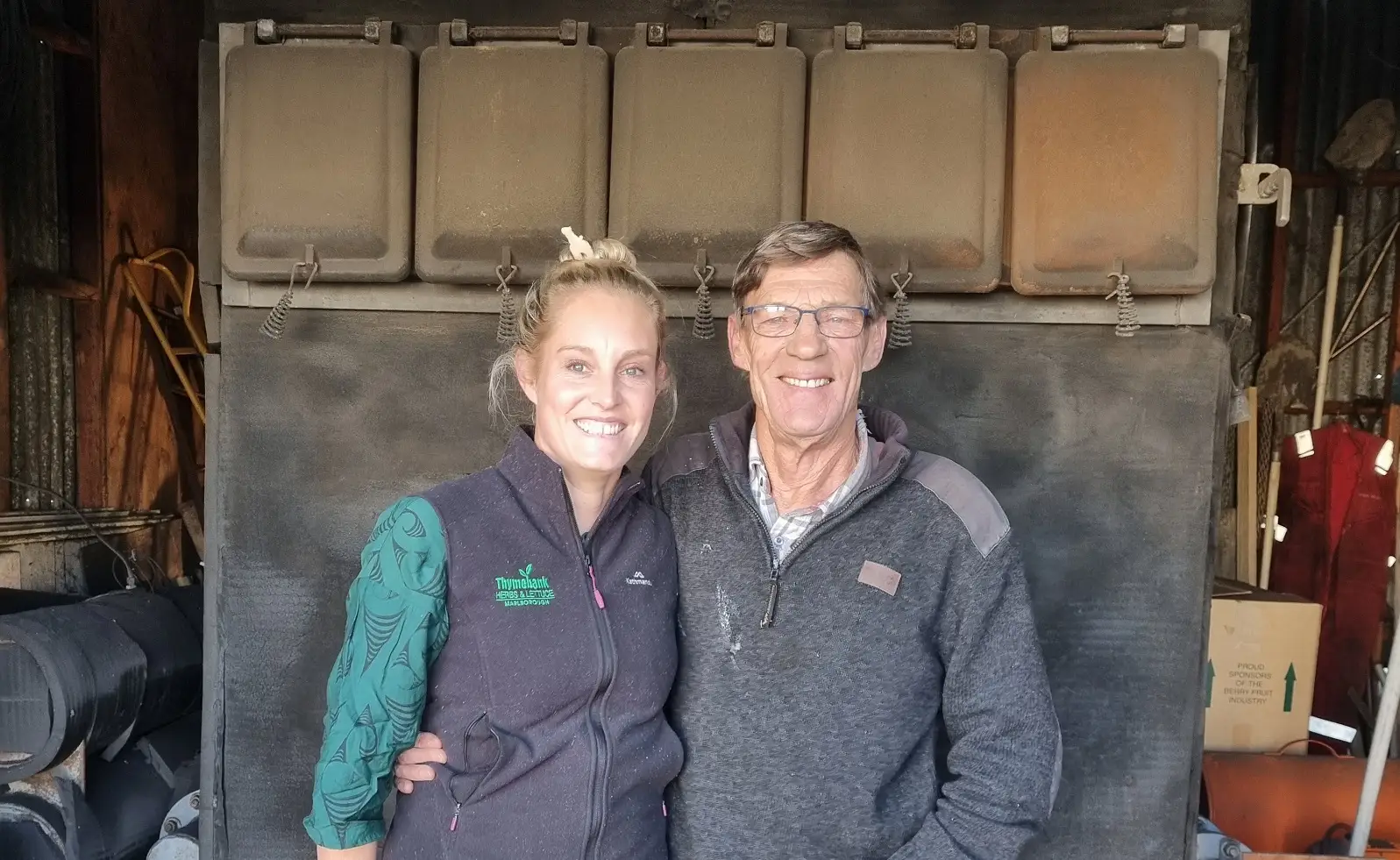Thymebank is decarbonising its covered cropping operations as part of a wider commitment to reducing the organisation’s carbon footprint.
A family business, the growers are committed to sustainability and providing New Zealanders with healthy greens with zero waste.
“We are environmentalists at heart, we are spray free and have alternative ways of managing pests,” said Thymebank owner Leanne Roberts.
“We identified that energy use is also significant here. Converting the boiler to run on wood chips and nut shells means now our energy outputs are cleaner, and we are also removing something from the waste stream which would ordinarily go to a landfill."
Thymebank also discovered operating costs fell after switching to from coal to biomass. They no longer had to pay for coal and eliminated their obligation to pay for carbon emissions, with ongoing production costs lower.
“This means we can produce our greens more reasonably which is good news for the consumer,” said Roberts.

There are a lot of people considering converting their technology as, in addition to it being inherently better for the environment, it is a safer bet financially.
Covered cropping and New Zealand’s future food security
New Zealand's weather and climate is variable from season to season, which impacts the ability to grow fresh fruit, vegetables, flowers, and fungi. Growing fresh produce in greenhouses means that New Zealanders can get fresh, locally grown food at any time of year, and producers can continue to trade.
Thymebank are domestic producers, supplying supermarkets, restaurants, and cafes from Invercargill to Palmerston North. And Roberts notes that growing seasonally can be a risk to food security. “That’s why people have a covered cropping operation. This is particularly important during winter, when severe weather events are more common and can affect food production."
Growing year-round requires heating that, when reliant on fossil fuels, comes at a significant financial and environmental cost.
“We looked at what we could do to reduce our emissions and remove a waste product,” said Roberts.
“Using wood chips that would otherwise go to landfill and nut shells were the best options – particularly because nut shells are high heat generator with a more consistent moisture level, making them better for burning and easier on our equipment.”
Overcoming barriers
Thymebank’s decarbonisation journey hasn’t always been easy, and Roberts speaks to barriers for covered cropping growers in fuel switching.
“Switching to biomass for heating and growing the way we are – can feel like a big change.
“For a lot of covered cropping operations year-round supply is one of the big advantages.”
Roberts said there is perception that fuel-switching and decarbonisation may make a business financially unviable or be simply too expensive.
“Coming off the back of three years of economic uncertainty and increased costs has impacted the sector. Converting our boiler made us feel like we have more control of things when there is so much uncertainty around. You can either shut your doors and simplify your operations or keep a step ahead like we have done.”
The pathway to decarbonisation success
Thymebank received co-funding as part of EECA’s Technology Demonstration Fund to help with a low-cost conversion of their existing coal boiler. The investment enabled Thymebank to use an arborist biowaste product to heat their glasshouses – providing a waste to energy solution and removing 102 tCO2e annually.
For Thymebank energy efficiency and fuel switching has involved a bit of help from the experts, and they are equally doing their bit to share their acquired knowledge widely within the sector.
Alongside this conversion, EECA worked with Thymebank to feed into a best method guide for other SME growers to support the Covered Cropping Decarbonisation Pathway. The pathway was developed in collaboration with Tomatoes New Zealand and Vegetables New Zealand to help reduce emissions sector-wide. It’s part of EECA’s wider Sector Decarbonisation Programme which collaborates with sector associations and technical experts to connect New Zealand businesses with world-class innovation and best practice guidance to decarbonise at a sector level.
Businesses account for around 40% of New Zealand's energy-related emissions, so they represent a big opportunity for decarbonisation, said EECA’s Business Group Manager Nicki Sutherland.
“Thymebank have demonstrated how a simple, low-cost conversion has potential for other growers in the wider covered crop industry and demonstrates an alternative decarbonisation pathway. It also directly addresses directly one of the main concerns from growers about availability and supply of biomass fuels.”
The Covered Cropping Decarbonisation Pathway provides growers with five key steps to reducing their energy use and emissions.
“EECA takes an energy efficiency first approach which reduces energy use and costs, with a flow on to their emissions, and makes fuel switching possible and cheaper later,” said Sutherland.
Roberts agrees “This is the future - particularly with coal being phased out. People want to change; they just want to do so when they are confident that they can manage or eliminate the risks and know that their business is viable and sustainable beyond that change. In our view, it’s a good investment for your business.”
Learn more about the Covered Cropping Decarbonisation Pathway
Read more
-
Indoor cropping | Innovative emissions reductions
Three indoor cropping business have saved costs and carbon emissions by adopting fresh technologies – thermal screens, dehumidifying heat pumps and LED grow lights
-
Sawmill Brewery says ‘hello’ to low-carbon beer
An independent New Zealand owned Brewery is working hard to reduce their energy-related emissions.
- Innovation
- Decarbonisation
